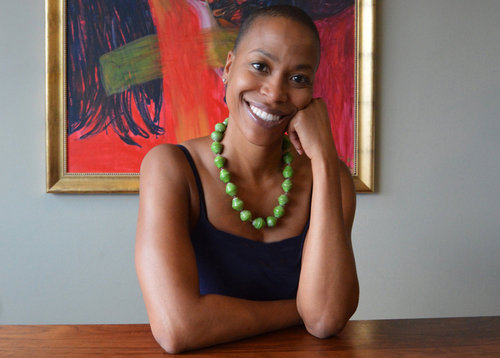

Rhea L. Combs is the curator of film and photography at the Smithsonian’s National Museum of African American History and Culture. She also serves as the head of the museum’s Earl W. and Amanda Stafford Center for African American Media Arts.
Before joining the museum, Combs taught visual culture, film, race and gender courses at Chicago State University, Lewis & Clark College and Emory University. In addition, Combs has independently and successfully curated film exhibitions nationally and internationally, including films exhibitions for the Schomburg Center for Research in Black Culture in New York City and the Institute of Contemporary Arts in London. She was also the assistant curator for the Spelman College Museum of Fine Art in Atlanta and a public programs educator at the Chicago Historical Society (now the Chicago Historical Museum).
Combs received her Bachelor of Arts degree from Howard University, a Master of Arts degree from Cornell University and a doctorate from Emory University. Her writings have been featured in anthologies, academic journals and exhibition catalogs on a range of topics, including African American female filmmakers, black popular culture, visual aesthetics, filmmaking and photography. She is the author of Exceeding the Frame: Documentary Filmmaker Marlon T. Riggs as Cultural Agitator.
Combs’ current exhibitions and projects, respectively, at the National Museum of African American History and Culture include “Rising Up: Hale Woodruff’s Murals at Talladega College,” “Through the African American buy viagra south africa Lens: Selections from the Permanent Collection” and the museum’s photography books series, Double Exposure, which includes Through the African American Lens: A Survey of NMAAHC’s Photography Collection, Civil Rights and the Struggle for Equality and African American Women.
Double Exposure is a based on the remarkable photography collection supporting the Earl W. and Amanda Stafford Center for African American Media Arts at the Smithsonian National Museum of African American History and Culture (NMAAHC). From daguerreotype portraits taken before the Civil War to twenty-first century digital prints, this series is a striking visual record of key historical events, cultural touchstones, and private and communal moments that helps to illuminate African American life.
In addition to featuring fifty photographs from a broad range of African American experiences, each thematic volume includes introductions by some of the leading historians, activists, photographers, and writers of our times. Many of the images in the series are by famous photographers such as Spider Martin, Gordon Parks, Ernest C. Withers, Wayne F. Miller, and Henri Cartier-Bresson. There are also iconic images, such as McPherson & Oliver’s Gordon under Medical Inspection (circa 1867), and Charles Moore’s photographs of the 1963 Birmingham Children’s Crusade. These take their place next to unfamiliar or recently discovered images, including work by Henry Clay Anderson of everyday life in the black community in Greenville (MS), during the height of the Jim Crow segregation laws.
